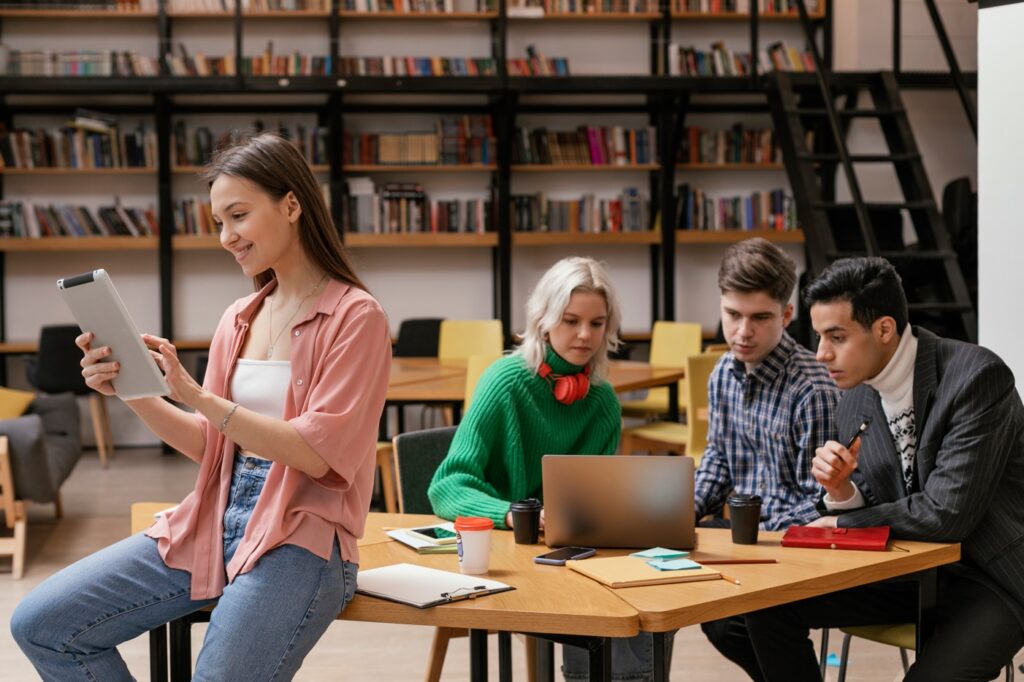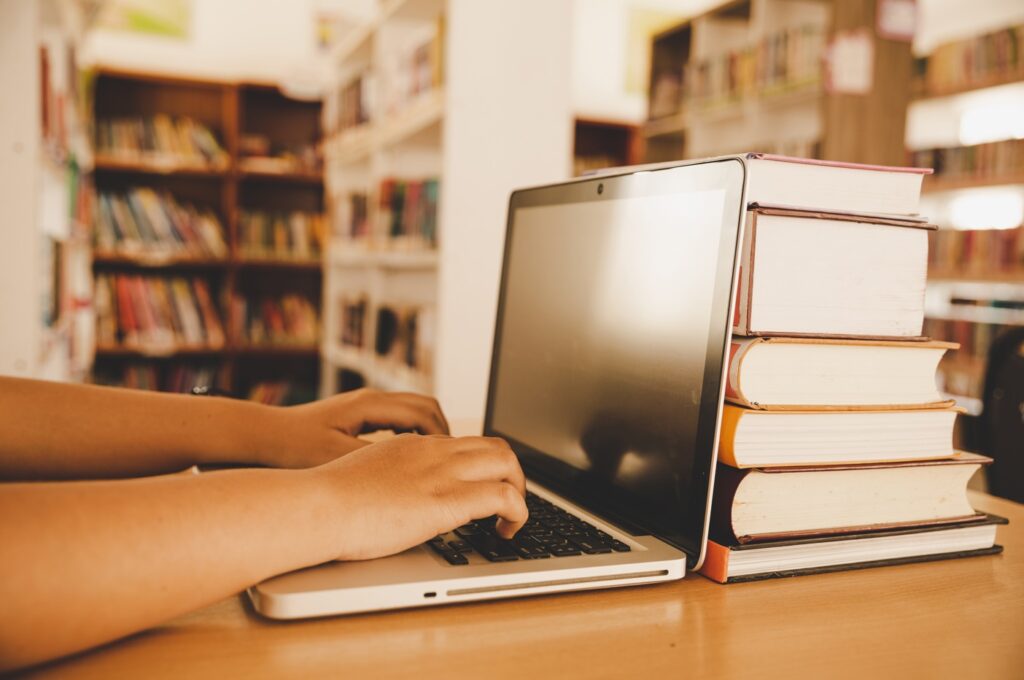E-Libraries or electronic libraries provide access to the digital resources. The digital resources are E-Books, Journals, Articles, and Multimedia Content. The E-libraries format is in Image or PDF format usually, in some cases the data is in EPUB format. The EPUB format gives limited access to edit the E-Libraries data.
The image to text converter extracts the text from images. The images do contain the most reliable information. This allows users to access specific information regarding a certain topic.
E-Libraries are one of the reliable sources. They are easily accessible resources in this age of digitalization. E-Libraries are going to provide the most authentic information. This information can be a good source of secondary data for a research thesis.
In this post, we’ll look more closely at how these text conversion and digital library tools are altering the landscape for information seekers, researchers, and students. Stay tuned to find out how these resources can improve your research process and make your quest for knowledge easier. Easy to understand, concise, and well worth your time. Let’s get to it!
What Are E Libraries?

E-libraries or Electronic libraries make it possible to easily access digital resources. The E-Libraries offer functionalities to access useful data for everyone. You need a nominal subscription fee for E-Libraries and access all the data at once.
The concept of the online library has changed the concept of learning. Students can learn about any topic from the online library. The students can also search the topic on the internet, they can find the solution to their problems. The image to text converter allows the user to readjust settings. Like the language recognition and output format etc.
The method of how to solve the problem, and if they find any problem in understanding the problem. Online libraries make the learning process easy for the students. The image to text conversion provides a real-time solution for students.
- E-libraries are available resources for students and researchers. It makes the research an authentic one.
- Secondary data resources are critical for the authenticity of research. You need to choose authentic research sources.
- In degree classes, now students must submit the Research Projects or Theses.
- E-libraries are a good way to prepare a class presentation. It contains authentic data with proper references.
E-Learning, and Educational Tools
E-learning and educational tools are good resources for learning for students. E-learning can improve the connectivity between the students of the class. Students do love to use tools like the image to PDF converters as they assist in digitizing data. make them more effective and efficient during their studies. These tools provide the students with a great platform to boost their abilities. Modern-day learning and teaching technologies are greatly helpful for both students and teachers. They are finding it quite helpful for the learning process. The teachers can download the online example about a topic, to explain to the students.
- E-Learning is a game changer in modern-day environments. As you can access data related to any topic.
- The online image to text converter does assist in extracting data. All the data from an image file and hence saves a lot of your time.
- Images do contain the most reliable data. The picture text conversion is critical for grabbing data.
- Most of the data available in the E-Libraries are in image format. The photo to text conversion does assist in extracting relative data.
Collaborative and Interactive Learning

Learning and teaching have become more collaborative and interactive. The emergence of technology makes it possible to do conversion efficiently. Students find it quite helpful in understanding the concept. They can share their ideas with groups of different students. They can share the notes and helping material with them. This can be great for their learning and growth.
But for sharing of data, they need to digitize data or in text format. Most of the data available usually from E-Libraries are in image format or PDF in nature. You need to extract text from images and digitize that data, saving a lot of your time.
- The image to text increases the level of collaboration of students with each other.
- You can extract text from images and share it with your peers and teachers. It increases the reliability of data.
- An enhanced level of collaboration assists students in learning topics quickly.
Utilization of Image-to-Text Converters
There are different types of image to text converters. It includes Adobe Acrobat, Google Docs, and Online converters. The online tool does provide user-friendly conversion for multiple-images at a time. This is necessary to convert the E-Library data into the editable text format.
The image to text conversion is a simple technique but it can save a lot of time and you can work smartly. It is quite necessary to select an online converter. It satisfies the user-specific requirements. There are different online tools created for different purposes and processes.
- Try to select a converter that satisfies your specific requirements.
- Some online tools have added features. It can be quite confusing for the user and they are not going to understand it’s working easily.
- Select an online converter that allows multiple conversions. The conversion commences without any delays.
Understanding Level

E-Libraries assist students in learning the basic concept of the topic. Students do love to learn a topic by understanding the fundamental concepts. If students can learn the basics, then it is easy to learn the whole topic.
Data in E-Libraries are usually in images or PDF format, you need to get text from images. Text-based data is editable and shareable for further use. The image to text converters are critical for data sharing. It is to extract educational data from different kinds of pictures. You can use the tool as a handy approach to drag out content from images and save it in your device gallery.
Students can extract text from images and increase their understanding of the concept. Students can understand each other more easily as they are on the same level of knowledge.
This can be great for the development of the understanding of the topic. Students can work along with students, as their mentors. The whole process of learning has completely changed and become more collaborative.
- Get text from images and make the E-Libraries data more understandable and shareable.
- Make the data editable by the JPG to text conversion. It makes changes according to your requirements.
- Grabbing text from images is a hectic process and does need a lot of time for students.
- Increase your understandability of the data with picture to text conversion.
Make Data Editable
The data in E-Libraries is usually in image and PDF format, which makes it difficult to edit data. Images are not usually editable and sometimes students do need editable data. The editable data is necessary for the research purpose and to make the presentation. Presentation is a common thing in today’s educational environment.
You need to convert JPG to text format to make any edits to it. Editable data is necessary to prepare a presentation. The other thing is to get text from images and to make your presentation more reliable.
The same goes for research, as secondary data resource reliability matters. References are key for successful research. The converter makes it possible to extract all the text from the images. Research containing reliable secondary data resources becomes credible for everyone. Images usually contain reliable information. This can become a good resource for secondary data.
The image to text conversion is a simple technique. The OCR grabs useful information from documents, books, and scanned data.
- Extract text from images and make all the data editable. For further use and sharing at different forums.
- The presentations need reliable data. You are presenting a topic in front of peers and mentors.
- Research needs editable data resources for further use. But E-Libraries data is not editable. You need to extract text from images to make data editable.
Converting images to text involves software and tools. This conversion is necessary for digitizing the printing material. You can grab text from photographs and screenshots.
FAQs
What Are the Common Examples of E-Libraries?
Famous E-libraries are the Library of America and Open Library. The Internet Archive, and Project Gutenberg. Some of these libraries use plugins or software to view the data or certain content.
The E-Libraries have data in PDF or image format and you need to convert it to text format.
What Is the Image to Text Conversion?
OCR is an Optical Character Recognition and it is a popular technique to convert any kind of image to text . You can convert the hard copies to editable text format with online image to text conversion.
The image to text conversion can save a lot of time and space for users and allow fast processing of data files. This can improve the efficiency of a business or an organization.
What is OCR in the library?
The OCR library recognizes the text of a digital image. We recommend recognizing the text in scanned documents and images. OCR software can convert a physical paper image into an editable text document. The image-to-text converter is a simple way to digitize hard copies of documents.






